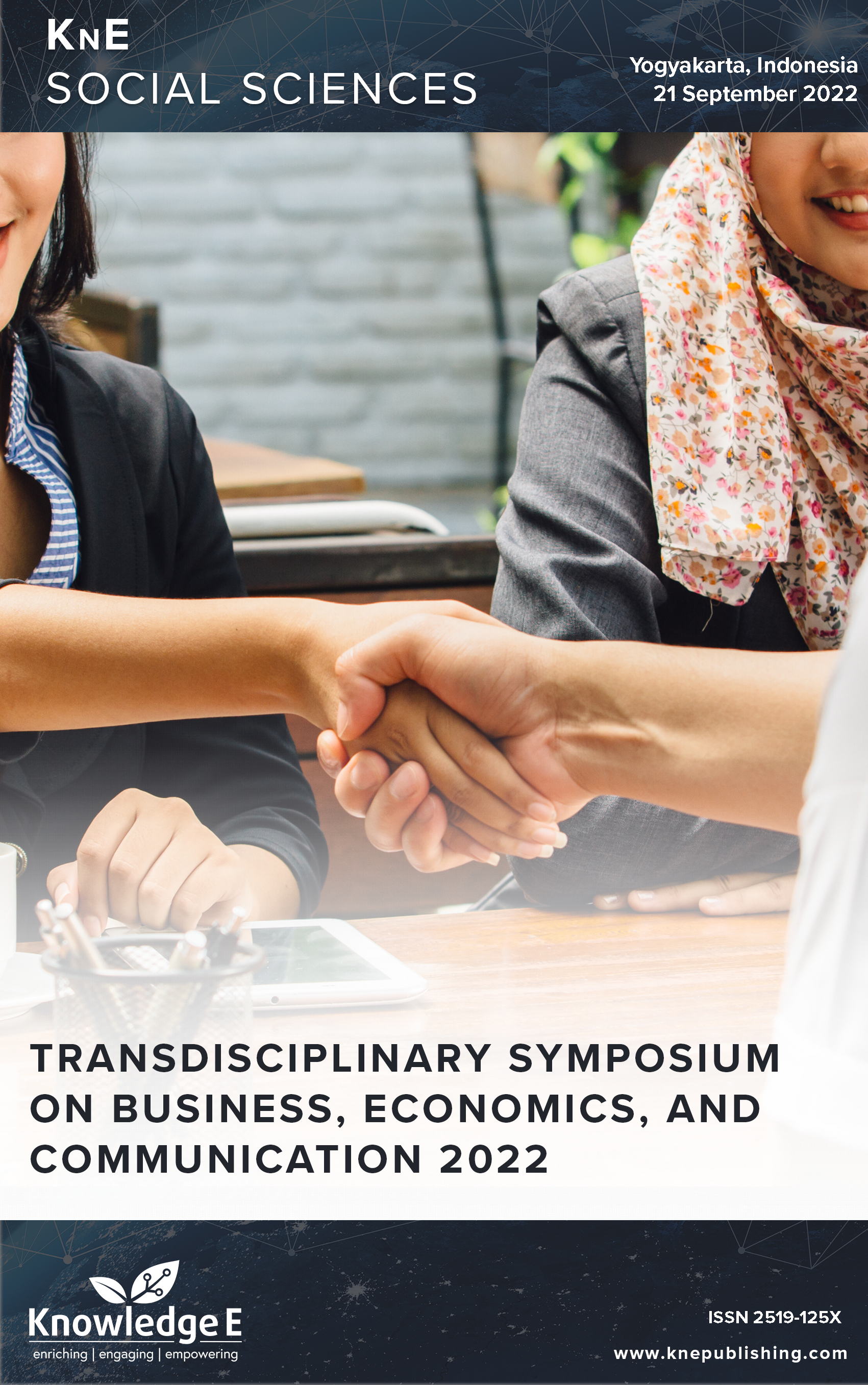The Silent Language of Political Communication of President Vladimir Putin
DOI:
https://doi.org/10.18502/kss.v8i12.13688Abstract
The delivery of messages in political communication varies. One of them was President Vladimir Putin’s political communication when he received a diplomatic visit from other Presidents, including President Joko Widodo’s visit in 2022. The messages sent and received by these two important people provoked different perceptions by the public. The extreme social distancing between President Vladimir Putin and other Heads of State was interesting to analyze. The purpose of this study was to analyze the distance (proxemics) of communication of President Vladimir Putin and President Joko Widodo, and President Vladimir Putin and President Emmanuel Macron. Data were collected from newspapers. Photographs showing the communication distance between President Putin and other heads of state were analyzed using proxemic theory. This research shows that President Vladimir Putin has a different way of welcoming and engaging himself when communicating with the President of Indonesia and the President of France. This non-verbal way of conveying messages shows both power and respect for the interlocutor.
Keywords: communication, proxemic, symbol, non-verbal communication
References
[2] Sitompul AL, Patriansyah M, Pangestu R. Analisis Poster Video Klip Lathi: Kajian Semiotika Ferdinand De Saussure. Besaung: Jurnal Seni Desain Dan Budaya. 2021;6(1).
[3] Sartini NW. Tinjauan teoritik tentang semiotik. Masyarakat, Kebudayaan Dan Politik. 2007;20(1):1–10.
[4] Peirce CS. Charles Sanders Peirce. Information Theory. 2014;181.
[5] Ekman P, Oster H. Facial expressions of emotion. Annual Review of Psychology. 1987;30(1):527-554.
[6] Fridlund AJ, Russell JA. The functions of facial expressions: What’s in a face? In Manusov V, Patterson M.L. (Eds.) The Sage handbook of nonverbal communication. Sage Publications, Inc; 2006. p. 299–319. https://doi.org/10.4135/9781412976152.n16
[7] Pantic M, Rothkrantz LJM, Koppelaar H. Automation of non-verbal communication of facial expressions. Proc. Conf. Euromedia. 1998:86–93.
[8] Obermeier C, Dolk T, Gunter TC. The benefit of gestures during communication: Evidence from hearing and hearing-impaired individuals. Cortex. 2012;48(7):857– 870.
[9] Mehrabian A. Communication without words. In Communication theory. Routledge; 2017. p. 193–200.
[10] Khakimov MK, ugli Melikuziev AL. The history of paralinguistic researches. International Journal of Culture and Modernity. 2022;13:90–95.
[11] Bohannon LS, Herbert AM, Pelz JB, Rantanen EM. Eye contact and video-mediated communication: A review. Displays. 2013;34(2):177–185.
[12] Barati L. The impact of eye-contact between teacher and student on L2 learning. Journal of Applied Linguistics and Language Research. 2015;2(7):222–227.
[13] Gorawara-Bhat R, Cook MA. Eye contact in patient-centered communication. Patient Education and Counseling. 2011;82(3):442–447.
[14] Barnard M. Fashion statements: Communication and culture. In Fashion Theory. Routledge; 2017. p. 170–181.
[15] Stuart EW, Fuller BK. Clothing as communication in two business-to-business sales settings. Journal of Business Research. 1991;23(3):269–290.
[16] Hall ET. The silent language in overseas business. Harvard Business Review. 1960;38(3):87–96.
[17] Hall ET, Birdwhistell RL, Bock B, Bohannan P, Diebold Jr AR, Durbin M, Edmonson MS, Fischer JL, Hymes D, Kimball ST. Proxemics [and comments and replies]. Current Anthropology. 1968;9(2/3):83–108.
[18] Lateiner D. Heroic proxemics: Social space and distance in the Odyssey. Transactions of the American Philological Association (1974-). 1992;122:133–163.
[19] Watson OM. Proxemics as non-verbal communication. Man, language and society: Contributions to the sociology of language. The Hague: Mouton. 1972:224–231.
[20] Watson OM. Proxemic behavior. In Proxemic behavior. De Gruyter Mouton; 2014.
[21] Eriyanto. Metode Komunikasi Visual: dasar-dasar dan aplikasi semiotika sosial untuk membedah teks gambar (Cetakan Pe). PT Remaja Rosdakarya; 2019.
[22] Van Leeuwen T. Discourse and practice: New tools for critical discourse analysis. Oxford university press; 2008.
[23] Kress GR, Van Leeuwen T. Reading images: The grammar of visual design. Psychology Press; 1996.
[24] Bagenda C. Interaksi Sosial. In Rayhaniah SA. (Ed.), Sosiologi Komunikasi. Bandung: Media Sains Indonesia; 2022. p. 19–33.
[25] Agnus OM. Proxemics: The study of space. IRWLE. 2012;8(1):1–7.
[26] Coleman R, McCombs M, Shaw D, Weaver D. Agenda setting. In The handbook of journalism studies. Routledge; 2009. p. 167–180.
[27] Zain N. Agenda setting theory. International Islamic University Malaysia; 2014.
[28] Kustiawan W, Fauzi A, Haqqi D, Saripuddin M, Imam RK, Puspita R. Karakteristik dalam Komunikasi Politik Mengemas Pesan Politik. JIKEM: Jurnal Ilmu Komputer, Ekonomi Dan Manajemen. 2022;2(1):2017–2024.
[29] Nevala M. Altering distance and defining authority: Person reference in Late Modern English. Journal of Historical Pragmatics. 2009;10(2):238–259.

